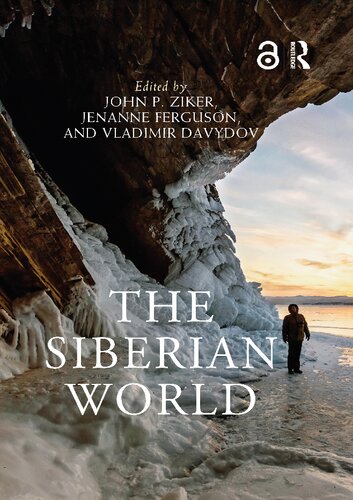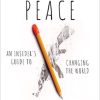The Siberian World 1st Edition John P. Ziker
$50.00 Original price was: $50.00.$25.00Current price is: $25.00.
The Siberian World 1st Edition John P. Ziker – Ebook Instant Download/Delivery ISBN(s): 9781000830057, 1000830055

Product details:
- ISBN 10: 1000830055
- ISBN 13: 9781000830057
- Author: John P. Ziker
The Siberian World provides a window into the expansive and diverse world of Siberian society, offering valuable insights into how local populations view their environments, adapt to change, promote traditions, and maintain infrastructure. Siberian society comprises more than 30 Indigenous groups, old Russian settlers, and more recent newcomers and their descendants from all over the former Soviet Union and the Russian Federation. The chapters examine a variety of interconnected themes, including language revitalization, legal pluralism, ecology, trade, religion, climate change, and co-creation of practices and identities with state programs and policies. The book’s ethnographically rich contributions highlight Indigenous voices, important theoretical concepts, and practices. The material connects with wider discussions of perception of the environment, climate change, cultural and linguistic change, urbanization, Indigenous rights, Arctic politics, globalization, and sustainability/resilience. The Siberian World will be of interest to scholars from many disciplines, including Indigenous studies, anthropology, archaeology, geography, environmental history, political science, and sociology. Chapter 25 of this book is freely available as a downloadable Open Access PDF at http://www.taylorfrancis.com under a Creative Commons Attribution-Non Commercial-No Derivatives (CC-BY-NC-ND) 4.0 license.
Table of contents:
PART I: INDIGENOUS LANGUAGE REVIVAL AND CULTURAL CHANGE
1 Language vitality and sustainability: Minority Indigenous languages in the Sakha Republic
2 (Socio)linguistic outcomes of social reorganization in Chukotka
3 Kŋaloz’a’n Ujeret’i’n Ŋetełkila’n—Keepers of the Native Hearth: The social life of the Itelmen language—documentation and revitalization
4 The phenomenology of riverine names and hydrological maps among Siberian Evenki
5 The tundra Nenets’ fire rites, or what is hidden inside of the Nenets female needlework bag tutsya?
6 Transformations of cooking technologies, spatial displacement, and food nostalgia in Chukotka
PART II: LAND, LAW, AND ECOLOGY
7 Customary law today: Mechanisms of sustainable development of Indigenous peoples
8 Indigenous land rights and land use in Siberia: Neighboring jurisdictions, varied approaches
9 Evenki “false” accounts: Supplies and reindeer in an Indigenous enterprise
10 Climate change through the eyes of Yamal reindeer herders
11 Nature-on-the-move: Boreal forest, permafrost, and pastoral strategies of Sakha people
12 Fluctuating human-animal relations: Soiot herder-hunters of South-Central Siberia
13 Ecology and culture: Two case studies of empirical knowledge among Katanga Evenkis of Eastern Siberia
PART III: CO-CREATION OF PEOPLE AND THE STATE
14 Dancing with cranes, singing to gods: The Sakha Yhyakh and post-Soviet national revival
15 Double-edged publicity: The youth movement in Buryatia in the 2000s
16 Soviet Debris: Failure and the poetics of unfinished construction in Northern Siberia
17 Local gender contracts and the production of traditionality in Siberian Old Believer places
18 Arctic LNG production and the state (the case of Yamal Peninsula)
19 Biography of alcohol in the Arctic village
20 Sanctioned and unsanctioned trade
21 Longitudinal ethnography and changing social networks
PART IV: FORMAL AND GRASSROOTS INFRASTRUCTURE AND SIBERIAN MOBILITY
22 Evenki hunters’ and reindeer herders’ mobility: Transformation of autonomy regimes
23 The infrastructure of food distribution: Translocal Dagestani migrants in Western Siberia
24 Development cycles of cities in the Siberian North
25 What difference does a railroad make?: Transportation and settlement in the BAM region in historical perspective
26 Stuck in between: Transportation infrastructure, corporate social responsibility, and the state in a small Siberian oil town
27 Hidden dimensions of clandestine fishery: A misfortune topology based on scenarios of failures
28 Infrastructural brokers in a logistical cul-de-sac: Taimyr’s wild winter road drivers
29 Ice roads and floating shops: The seasonal variations and landscape of mobility in Northwest Siberia
PART V: RELIGIOUS MOSAICS IN SIBERIA
30 Contemporary shamanic and spiritual practices in the city of Yakutsk
31 The making of Altaian nationalism: Indigenous intelligentsia, Oirot prophecy, and socialist autonomy, 1904–1922
32 Missionaries in the Russian Arctic: Religious and ideological changes among Nenets reindeer herders
33 Nanai post-Soviet Shamanism: “True” shamans among the “neo-shamans”
34 Feeding the gi’rgir at Kilvei: An exploration of human-reindeer-ancestor relations among the Siberian Chukchi
35 Feasts and festivals among contemporary Siberian communities
36 Animals as a reflection of the universe structure in the culture of Oka Buryats and Soiots
PART VI: CONCEPTIONS OF HISTORY
37 Economics of the Santan trade: Profit of the Nivkh and Ul’chi traders in Northeast Asia in the 18th and 19th centuries
38 Power, ritual, and art in the Siberian Ice Age: The collection of ornamented artifacts as evidence of prestige technology
39 Archaeology of shamanism in Siberian prehistory
40 Rock art research in Southeast Siberia: A history of ideas and ethnographic interpretations
41 A history of Siberian ethnography
42 Cycles of change: Seasonality in the environmental history of Siber
People also search:
how many siberian tigers are left in the world
how many siberian tigers are left in the world 2023
how many siberian tigers are left in the world 2024
how many siberian huskies are in the world
biggest siberian tiger in the world
You may also like…
Animals & Pets - Dogs
Technique - Military equipment: Weapon
Uncategorized
Mathematics - Logic
Biology and other natural sciences - Ecology
Predator Ecology: Evolutionary Ecology of the Functional Response 1st Edition
Biology and other natural sciences - Plants: Botany
Engineering - Civil & Structural Engineering
Corrosion of Steel in Concrete 3rd Edition by John Broomfield 1032120983 978-1032120980
History - European History












